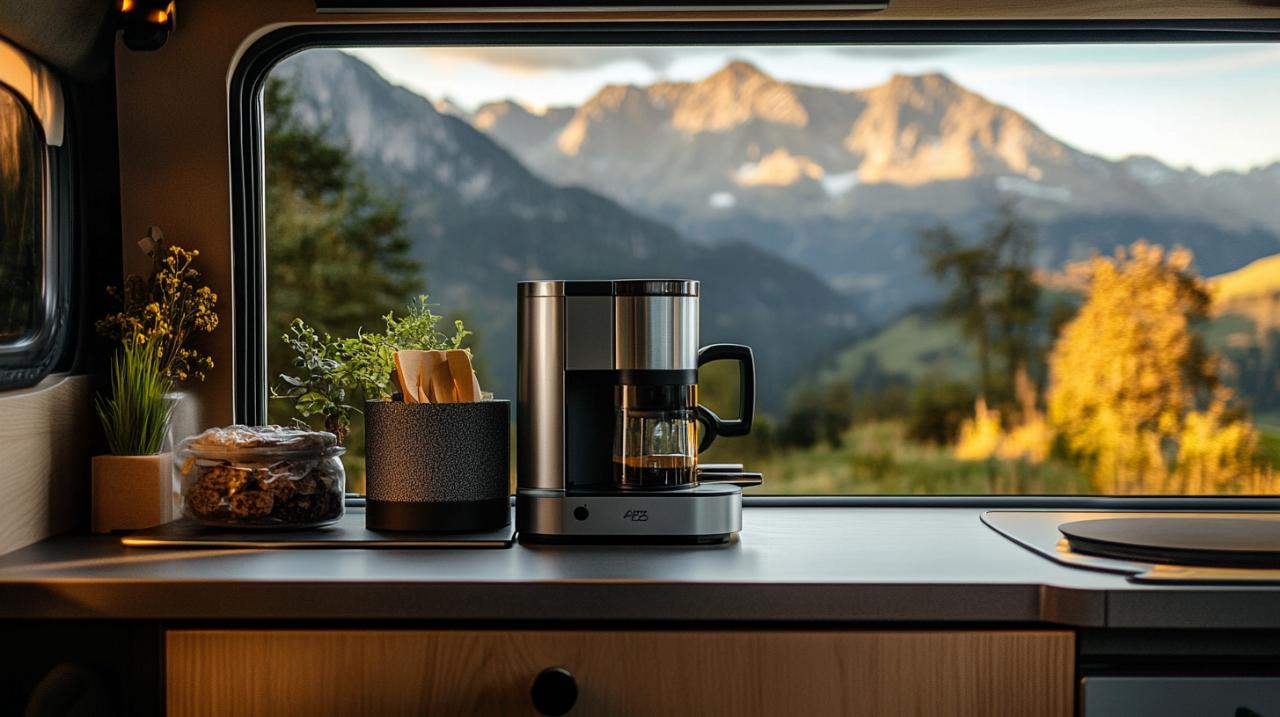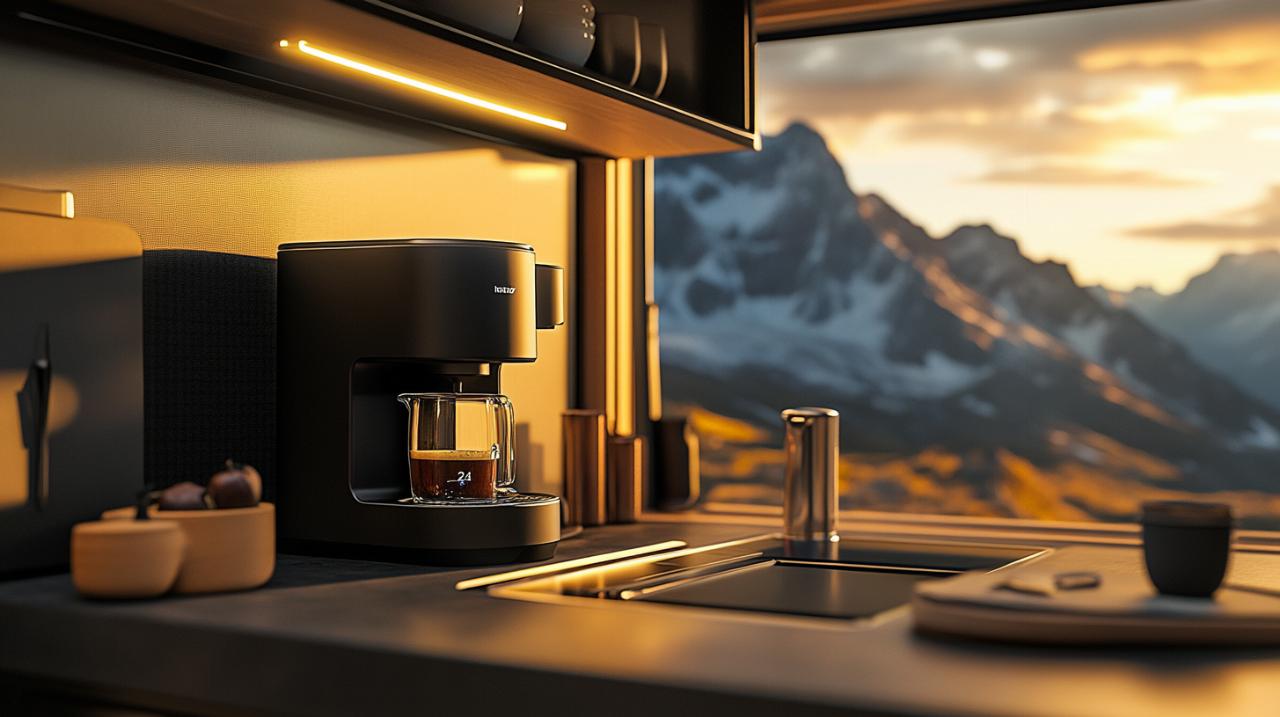Exploring compact coffee makers: efficient design and superior value

For those navigating the bustling world of home brewing, the quest for the perfect coffee machine often centres on finding a device that balances quality with practicality. In urban kitchens where every inch counts, compact coffee makers have emerged as a remarkably clever solution. These machines promise not only to deliver a satisfying cup but also to fit seamlessly into smaller spaces without compromising on performance. The evolution of these devices reflects a broader trend in kitchen appliances, where efficiency and value have become paramount for discerning consumers seeking barista-level beverages without the hefty price tag or sprawling footprint.
The brilliant engineering behind space-saving coffee machines
Designing a coffee machine that occupies minimal counter space yet delivers exceptional results is no small feat. Engineers and designers have spent years refining the internal architecture of these devices, ensuring that every component serves multiple purposes. The challenge lies in condensing complex brewing mechanisms into a chassis that remains accessible and user-friendly. Modern compact coffee makers often feature ingeniously stacked systems where water reservoirs, heating elements, and brewing chambers are arranged vertically rather than horizontally. This vertical integration allows manufacturers to reduce the machine’s width and depth significantly, making them ideal for city flats and smaller households.
Clever components that maximise functionality in minimal space
One of the most impressive aspects of compact coffee makers is how they manage to incorporate essential features without sprawling across the kitchen. For instance, many of these machines now include integrated grinders that nestle neatly beneath the brewing chamber, eliminating the need for a separate appliance. This approach not only saves space but also ensures that freshly ground beans are delivered directly to the brewing unit, preserving aroma and flavour. Similarly, the milk frothing systems have evolved to become more streamlined, with some models employing detachable wands or automatic frothing mechanisms that fold away when not in use. The water reservoir, often a bulky component in traditional machines, has been reimagined in compact designs. Manufacturers have turned to slimline tanks that sit flush against the back of the machine or even within the base, allowing users to maintain a tidy worktop. These tanks are typically removable, making refilling and cleaning straightforward despite their reduced size. Additionally, drip trays have been designed to be both functional and discreet, capable of accommodating multiple cups before requiring emptying, all while maintaining a low profile. The control interfaces on compact machines have also undergone a transformation. Touchscreens and minimalist button layouts replace the clutter of dials and switches, providing a sleek aesthetic while offering a full range of customisation options. Some models even integrate smart technology, enabling users to adjust settings via smartphone apps, further reducing the need for physical controls on the device itself.
Modern Materials and Manufacturing Techniques for Compact Designs
The materials used in constructing compact coffee makers play a crucial role in achieving both durability and reduced dimensions. Lightweight yet robust alloys and high-grade plastics have replaced heavier metals in non-critical areas, allowing manufacturers to shave off excess weight without sacrificing structural integrity. This shift not only makes the machines easier to move and store but also contributes to their overall energy efficiency, as less power is required to heat smaller, more thermally efficient components. Advanced manufacturing techniques such as precision moulding and laser cutting enable designers to create intricate parts that fit together with minimal gaps or wasted space. These methods allow for tighter tolerances, meaning that components can be nested closely together without risking interference or malfunction. The result is a machine that feels solid and well-built despite its compact size, instilling confidence in users who might otherwise question the reliability of a smaller appliance. Moreover, the aesthetic appeal of these devices has not been overlooked. Brands have invested in sleek finishes and contemporary styling, ensuring that compact coffee makers are not merely functional but also serve as attractive additions to modern kitchens. The use of brushed stainless steel, matte black coatings, and even bold colours allows these machines to complement a wide range of interior designs, proving that efficiency need not come at the expense of style.
Outstanding value propositions of petite coffee makers
 When considering the purchase of a coffee machine, value extends far beyond the initial price tag. Compact models have carved out a niche by offering a compelling combination of affordability and performance, making them accessible to a broader audience. For many home brewing enthusiasts, the prospect of achieving café-quality results without the financial burden of a high-end, full-sized machine is incredibly appealing. This democratisation of quality coffee has been driven by advancements in technology and manufacturing, which have brought down costs while maintaining, and in some cases improving, the standard of the final brew.
When considering the purchase of a coffee machine, value extends far beyond the initial price tag. Compact models have carved out a niche by offering a compelling combination of affordability and performance, making them accessible to a broader audience. For many home brewing enthusiasts, the prospect of achieving café-quality results without the financial burden of a high-end, full-sized machine is incredibly appealing. This democratisation of quality coffee has been driven by advancements in technology and manufacturing, which have brought down costs while maintaining, and in some cases improving, the standard of the final brew.
Cost-effective solutions for home brewing enthusiasts
The affordability of compact coffee makers is one of their most compelling features. With prices ranging from modest budget options to mid-range models, these machines cater to a wide spectrum of buyers. Budget-friendly choices, such as those highlighted in recent reviews, often feature manual controls and straightforward brewing methods, perfect for individuals who value simplicity and are willing to engage more actively in the brewing process. On the other hand, slightly pricier models introduce automatic functions, integrated grinders, and customisable settings, bridging the gap between convenience and quality. The diversity of options ensures that whether one is a student furnishing a first flat or a professional looking to upgrade from instant coffee, there is a compact machine that fits both spatial and financial constraints. Furthermore, the competitive nature of the coffee machine market has spurred manufacturers to innovate continually, offering features previously reserved for premium appliances at more accessible price points. This trend benefits consumers, who can now enjoy versatile machines capable of preparing espresso, cappuccino, and even long coffees without breaking the bank. The availability of machines that accommodate both ground coffee and pods adds another layer of flexibility, allowing users to experiment with different brands and blends without committing to a single system. For those who frequent platforms like ajuegosa.es, where discussions around practical and efficient home solutions abound, the appeal of such versatile and affordable machines is undeniable.
Long-term savings through energy efficiency and durability
Beyond the upfront cost, compact coffee makers offer significant long-term savings. Their reduced size typically translates to lower energy consumption, as smaller heating elements require less power to reach optimal brewing temperatures. Many modern machines also feature automatic shut-off functions and energy-saving modes, further reducing electricity usage and contributing to lower utility bills over time. This efficiency is particularly advantageous for those who brew multiple cups throughout the day, as the cumulative savings can be substantial. Durability is another critical factor in the value proposition of compact coffee makers. Advances in materials and construction techniques mean that these machines are built to withstand daily use, often backed by manufacturer warranties that provide peace of mind. The ease of maintenance, facilitated by removable parts and straightforward cleaning protocols, helps to extend the lifespan of the appliance. Users can typically descale and clean their machines with minimal effort, preventing the buildup of limescale and coffee oils that can degrade performance and flavour. Some models even include automated cleaning cycles, simplifying the upkeep process further. Additionally, the repairability of compact coffee makers has improved, with many brands offering accessible customer service and readily available replacement parts. This approach contrasts with the disposable culture that has plagued some consumer electronics, allowing users to maintain their machines for years rather than discarding them at the first sign of trouble. For environmentally conscious consumers, this durability and repairability represent not only financial savings but also a reduction in waste, aligning with broader sustainability goals. In conclusion, the rise of compact coffee makers reflects a shift towards smarter, more efficient home appliances that do not sacrifice quality for convenience. Their ingenious design, coupled with outstanding value, makes them an excellent choice for anyone seeking to elevate their daily coffee ritual without overwhelming their kitchen or their wallet.


















